This content represents the writer’s opinions and research and is not intended to be taken as financial advice. The information presented is general in nature and may not meet the specific needs of any individual or entity. It is not intended to be relied upon as a professional or financial decision-making tool.
Generally speaking, staking cryptocurrencies is the process of locking up the crypto-assets you possess with the purpose to earn interest or receive other rewards (like voting rights, etc.). It allows you to earn these rewards depending on the amount you have staked, and how much and what kind of rewards are being distributed to the specific staking pool you joined. Most crypto exchanges and platforms, which offer to stake rewards typically distribute payments in the same cryptocurrency on a regular schedule, resulting in an annual interest rate from 3% to 15% (or even more).

Crypto-assets eligible for staking
Still, not all cryptocurrencies allow staking in a classical sense. In a nutshell – there are two “consensus mechanisms” for approving and recording transactions used in the crypto-universe: Proof of Work (PoW) or Proof of Stake (PoS). Only the latter allows for staking in the standard way we defined above. This group of cryptocurrencies consists of the “younger” generation digital tokens like ETH2, Tezos, Cardano, Solana, BNB, Cosmos, Polygon, etc. The reason here is that the PoS decision-making model ensures that all transactions are verified and secured without a bank or payment processor in the middle.
Now the PoW model is the traditional “old” model where it all started, which is based on mining. It is the “consensus mechanism” on which also the most famous crypto – Bitcoin (BTC) has been established. PoW requires solving complex problems by miners using high-powered computers. The first miner to complete the puzzle or cryptographic equation gets the authority to add new blocks to the blockchain for transactions. When the block is authenticated by a miner, the digital currency is then added to the blockchain. The miner also receives compensation in digital coins.
Related risks – Pros and Cons
Staking is a good option for investors interested in generating yields on their long-term investments, who are not bothered by short-term fluctuations in cryptocurrency prices.
Additionally, while staking your digital tokens you should remember that like any other investment, staking crypto-assets carries a risk of partial or complete losses. Therefore, you should consider taking your holdings of cryptocurrencies up to an amount, which you can afford to lose.
Wrapping up the pros and cons of the staking:
- Additional and potentially high-interest rates earned on top of expected capital appreciation
- Further simulating long-term investors to keep their money in specific crypto assets by locking the amount for a specific time
- As the demand rises the expected interest earned on staked crypto assets may rise as well
- The high return always comes with a higher risk
- You have to lock the amount you stake and it can’t be liquidated
- Potential loss of the crypto value vanishing the additional interest earned
- Cyber security and risk of malicious attacks
Table of Contents
- How to Stake Bitcoin?
- Bitcoin Staking Tax
- Why do people like Staking Bitcoin?
- Conclusion
- Bitcoin Staking FAQs
- How can I stake Bitcoin?
- How much interest can I earn on Bitcoin through these platforms?
- What are the main benefits of earning interest on Bitcoin?
- What are the key risks associated with the interest accounts on Bitcoin?
- What are some of the alternative platforms that allow you to earn interest on Bitcoin?
- What are taxes applied on earning interest on Bitcoin?
How to Stake Bitcoin?
Staking Bitcoin using Simple Earn on Binance is a straightforward process that allows you to earn interest on your crypto assets by participating in staking. Please follow these steps:
Step 1: Sign Up and Verify your Account
If you want to stake Bitcoin, the first thing you must do is create an account on Binance.

Then go through the verification steps to provide Binance with proof of identity.

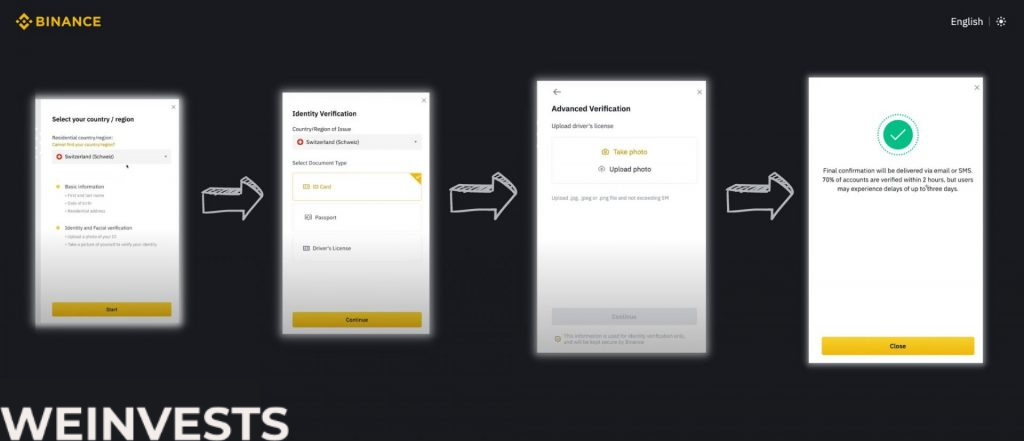
Step 2: Fund your Account
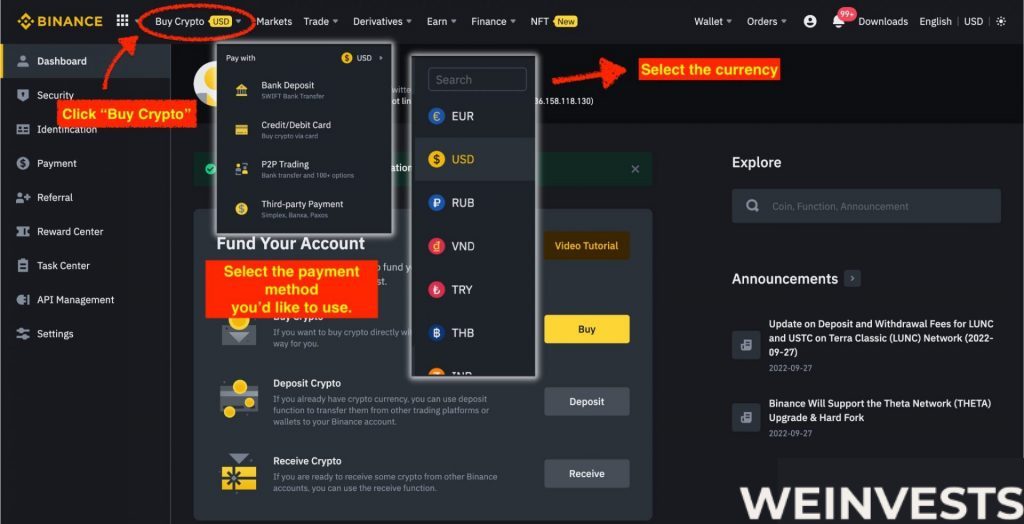

On the top navigation bar, hover over the “Earn” tab and click on “Binance Earn” from the drop-down menu. Once on the Binance Earn page, find the “Simple Earn” section.

Go to the drop-down menu labeled ‘Earn.’ Here, you will have multiple options. Click on ‘Binance Earn’ and then search for ‘BTC’.
Step 4: Analyze the Staking Parameters and Stake
Here, you can analyze Bitcoin using the ‘Calculate your crypto earnings’ feature. You can input the amount you want to invest and see the projected earnings for 1 year, 2 years, 3 years, or 5 years. Simply click on the desired number of years to invest in ‘BTC’.
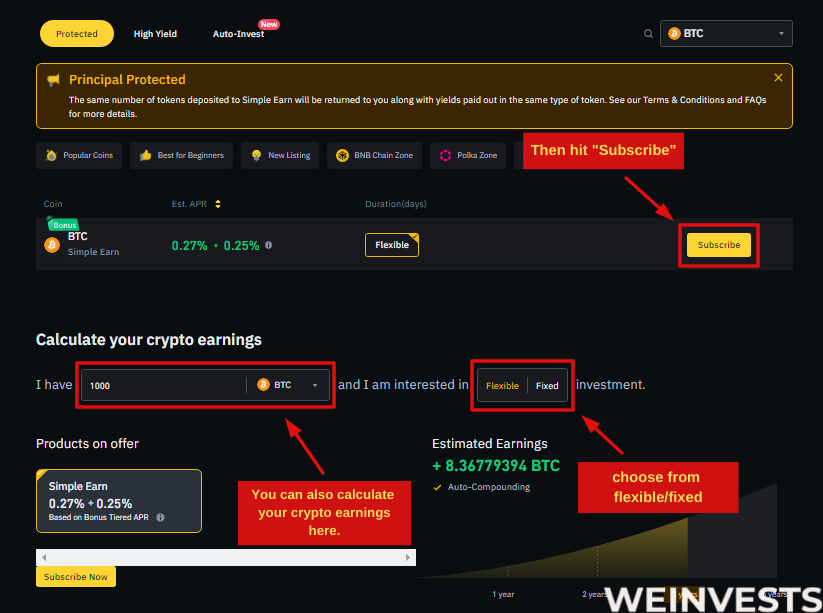
If you want to earn rewards with your Bitcoin (BTC) on Binance.com, you can go to the “Products on Offer” section under “Earn” and choose between two options: “Simple Earn” and “Flexible DeFi Staking”.
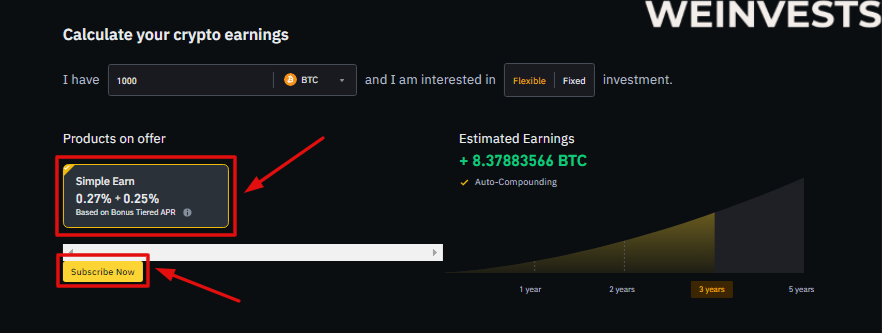
“Simple Earn” lets you deposit your BTC in flexible or locked products and earn daily rewards. You can subscribe or redeem at any time, so you can maintain your assets’ flexibility and liquidity. The rewards are sourced from Binance’s own funds and are based on the market conditions.
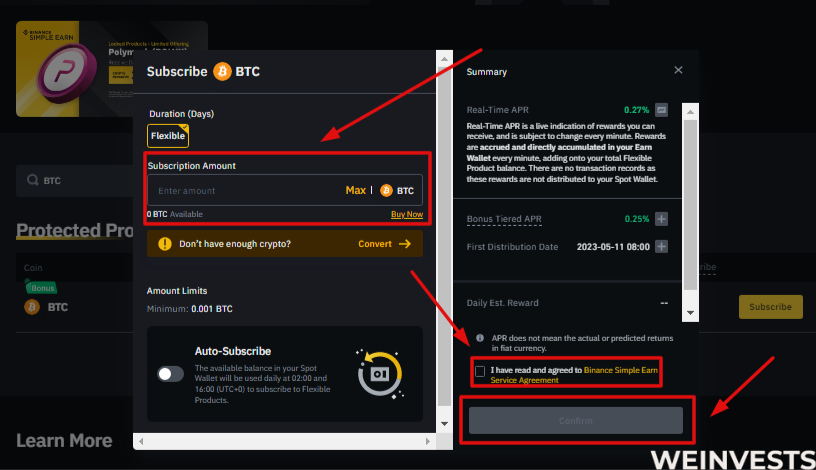
Bitcoin Staking Tax
Taxes on interest earned from Bitcoin may vary by country. Most of the tax jurisdictions have either applied the same rates as for capital gains and interest earned on traditional financial products to crypto assets or government and regulatory authorities in certain countries came up with specific tax rates for the crypto gains.
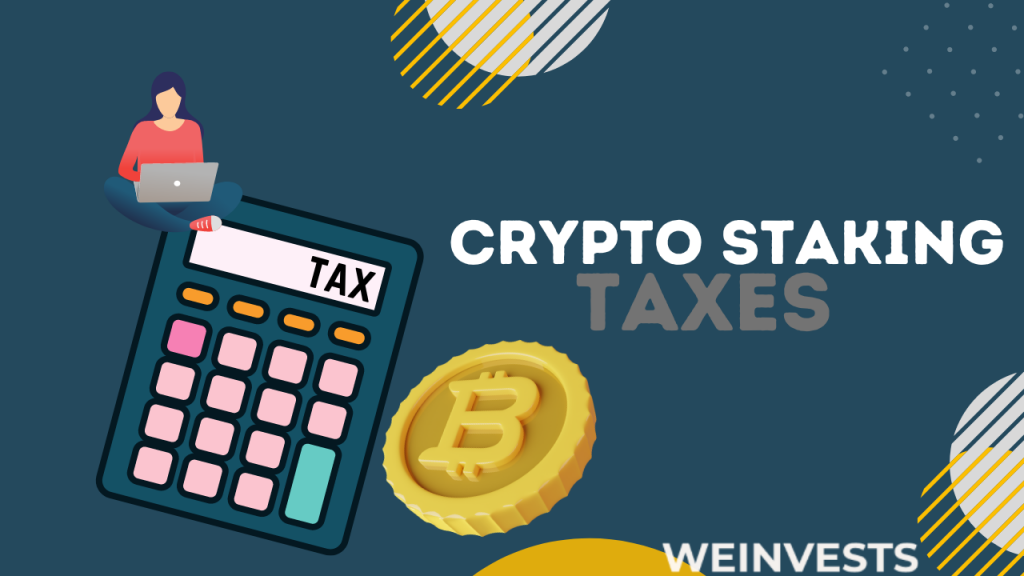
You will need to consult with a tax adviser or do your own research as the taxes may vary on a case-by-case basis, however, we can expect that taxes on the interest earned on Bitcoin should be more or less treated similarly as the interest-bearing assets such as bank deposits, bond investments or person to person lending platforms.
Usually, some large consulting companies provide presentations about the country’s taxes that may be publicly available. You can use this source to get a general understanding of the crypto tax environment. However, if you want to optimize your taxes and identify certain areas where you can reduce or defer the taxes then it is highly recommended to consult with a local tax adviser who will analyze your case and provide further recommendations on how to make your tax reporting more efficient.
Why do people like Staking Bitcoin?
Bitcoin is also known as the “father” of crypto assets given it was one of the first cryptos that were introduced to the mass public. Many people believe that Bitcoin is the gold of crypto assets and hence they invest in it with the goal of long-term capital appreciation. But some people invest in it for daily trading with the hope of short-term gains.
Staking is not for people who are there to simulate on Bitcoin and earn on the short-term price increase. It is rather for those investors who have a goal of long-term capital appreciation who might use the staking or rather earning interest on Bitcoin with platforms mentioned above. This would increase the return on investment by providing further gains on top of potential capital appreciation which is why those long-term investors like to stake their Bitcoin holdings.
Conclusion
In this article, we covered the difference between proof of stake and proof of work, and the reasons why one enables investors to stake and the other fails to do so. Based on that explanation we explained why Bitcoin cannot be staked with major crypto brokerage platforms. However, we also covered alternative platforms where you can earn interest on your Bitcoin holdings which is quite similar to the staking concept. We also covered how to open an account with those alternative platforms.
Although the additional returns might be attractive, the process of staking crypto or earning additional interest still comes with high risk as does the overall investment in crypto assets. You might consider carefully the risks and understand whether you can bear such risk of losing the value of your entire investment in crypto before deciding to open an account with these brokerages.
Bitcoin Staking FAQs
How can I stake Bitcoin?
As discussed before Bitcoin is not part of the proof of stake concept, but rather proof of work which makes it impossible to stake.
How much interest can I earn on Bitcoin through these platforms?
The annual interest varies depending on the demand and supply of that crypto asset at a given time. You can expect to earn between 3-15% per year depending on the demand for the Bitcoin interest on the alternative platforms.
What are the main benefits of earning interest on Bitcoin?
The main benefit of the interest earned on the Bitcoin is the additional yield received on top of potential capital gains or it might also work as a cover for part of your capital losses.
What are the key risks associated with the interest accounts on Bitcoin?
As with any type of investment, putting your money in Bitcoin or BTC interest-bearing account comes with a significant risk of losing part or the entire value of your investment. Other risks that can be considered as well are the cyber security risk that may wipe out your investments in crypto assets.
What are some of the alternative platforms that allow you to earn interest on Bitcoin?
In this article, we have covered three alternative brokerages. At the same time, the article goes through the process step by step on how to open an account with one of these alternative platforms.
What are taxes applied on earning interest on Bitcoin?
Applicable taxes are different based on your tax residence and they can even diverge for people within the same tax jurisdiction since each individual may have certain tax thresholds applicable. Usually, taxes applied on interest earned through crypto are similar to the taxes earned on fixed-income instruments such as term deposits or bonds. However, you need to consult your tax adviser to gain further information about taxes that are applicable in your specific case.
WeInvests is a financial portal-based research agency. We do our utmost best to offer reliable and unbiased information about crypto, finance, trading and stocks. However, we do not offer financial advice and users should always carry out their own research.
Read More








